Dont be afraid!

Dare to challenge.....

Dare to accept.....

Dare to dream.....

- Dare to emerge from the traditional matrix
- be free from spiritual bondage
The philosopher should be a man willing to listen to every suggestion, but determined to judge for himself. He should not be biased by appearances, have no favorite hypothesis, be of no school, and in doctrine have no master. He should not be a respecter of persons, but of things. Truth should be his primary object. If to these qualities be added industry, he may indeed hope to walk within the veil of the temple of Nature.
- Michael Faraday (1791-1867)
Qigong
Meditation
Small Circulation
Dr. Yang, Jwing-Ming
YMAA Publication Center
Wolfeboro, NH
YMAA Publication Center
Main Office:
PO Box 480
Wolfeboro, New Hampshire 03894
1-800-669-8892
Copyright 2006 by Dr. Yang, Jwing-Ming
All rights reserved including the right of
reproduction in whole or in part in any form.
ISBN: 9781594390678(Print) ISBN: 9781594391521(ebook)
Editor: David Silver
Cover Design: Tony Chee
Publishers Cataloging in Publication
Yang, Jwing-Ming, 1946
Qigong meditation : small circulation / Yang, Jwing-Ming. -- 1st ed. -
Boston, Mass. : YMAA Publication Center, 2006.
p. ; cm.
ISBN-13: 978-1-59439-67-8
Text in English, with some Chinese characters included
Includes bibliographical references, translation and glossary of
Chinese terms, and index.
1. Qi gong. 2. Qi (Chinese philosophy) 3. Meditation. I. Title.
RA781.8 .Y363 20062006925695
613.7/148--dc220605
Anatomy drawings copyright 1994 by TechPool Studios Corp. USA, 1463 Warrensville Center Road, Cleveland, OH 44121
Disclaimer:
The author and publisher of this material are NOT RESPONSIBLE in any manner whatsoever for any injury which may occur through reading or following the instructions in this manual. The activities, physical or otherwise, described in this material may be too strenuous or dangerous for some people, and the reader(s) should consult a physician before engaging in them.
This ebook contains Chinese translations of many terms and may not display properly on all e-reader devices. You may need to adjust your Publisher Font Default setting.
Contents
PART III. SMALL CIRCULATION MEDITATION 
(SMALL CYCLIC HEAVEN OR MICROCOSMIC MEDITATION)
Thomas G. Gutheil, MD
Qigong is a science of inner feeling which relates to spiritual cultivation.
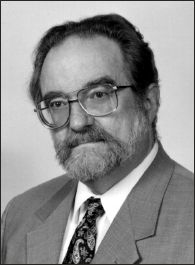
This definition may strike the Western reader as somewhat strange, since it fuses an Eastern concept of biologic energy and the idea of science, together with feeling and spirituality concepts which are usually quite separate in Western thinking. But the very essence of Qigong is its union of physical, mental and spiritual issues into one discipline.
Western medicine is just beginning to explore the role of meditation in various forms as a legitimate adjunct to other approaches. The concept known as mindfulness, in which meditation consists of focus on breathing and the attempt to empty the mind of linear thought, is one such modern application. Though not as popular as it once was, transcendental mediation represents another form. Taiji, sometimes described as moving meditation, is, of course, one of the oldest forms but one which is enjoying a modern resurgence, even in alternative medicine where it is used to aid with a number of medical problems such as high blood pressure and ulcers. Yoga has also been practiced, sometimes in conjunction with mindfulness practice, to achieve some of the same states of tranquility. Finally, in the scientific community, studies of the so-called relaxation response represents another form that this method may take in current practice. Producing results ranging from feelings of inner harmony and tranquility to actual decreases in blood pressure, these techniques have gradually found a place in popular awareness and fields of healing.
In this work Dr. Yang, Jwing-Ming continues his astonishingly productive life-long endeavor of unearthing hidden, secret, lost and otherwise unavailable ancient Chinese texts and translating them for the world of readers. The present book also takes its place in a series of works that explore almost every aspect of Qigong from its roots to its practical applications (see bibliography). Moreover, the present volume represents an updating of understanding of the fundamental principles of Qigong since publication of the predecessor volumes.
Based on the foundation of Internal Elixir Qigong practice, this book takes the reader to the next level of spiritual cultivation. Moving from an overview of the topic, Master Yang takes the reader through meditation training; then the specifics of Small Circulation, and then a look toward the future development of the subject.
While retaining the colorful and highly metaphoric language of the original texts, Dr. Yang makes the complex subject accessible and useful to the interested reader or practitioner. A helpful glossary furthers this accessibility. The thoughtful reader may thus gain a deep understanding of the basic sciences of this aspect of Qigong practice.
Thomas G. Gutheil, M.D.
Harvard Medical School
Several friends have asked how I found time and energy to achieve proficiency in three Chinese martial arts styles, at the same time obtaining my Masters degree in Physics and Ph.D. in Mechanical Engineering. The main reason I could achieve each goal I set, was that I learned how to concentrate through meditation. I have practiced and studied meditation since I was seventeen. I could relax whenever I was tense, and ponder profoundly when I needed to. Meditation brought me another worldthe world of spiritual awareness, which enabled me to build up self-confidence, wisdom and a better understanding of the world.
Small Circulation Meditation (Small Cyclic Heaven or Microcosmic Meditation, Xiao Zhou Tian Jing Zuo,  ) has been well known for centuries throughout the East, including China, India, Indo-China, Korea, and Japan. According to ancient documents from Buddhist and Daoist monasteries, if one practices correctly under a masters guidance, it might take only 90 days to learn to circulate Qi in the Small Circulation path of the Conception and Governing Vessels. But I did not achieve this goal until I was 24 because I was young, and did not know the correct theory and technique. Documentary information was sparse, so I asked my White Crane and Taijiquan Masters. Due to lack of personal teaching experience, they refused to guide me. They simply advised me not to continue because of the danger involved. I could not calm down my mind to practice due to my school work and martial arts training. From the age of 15 to 19, in addition to school work, I trained Taijiquan in the early morning, and White Crane every evening. My meditation practice suffered as a result.
) has been well known for centuries throughout the East, including China, India, Indo-China, Korea, and Japan. According to ancient documents from Buddhist and Daoist monasteries, if one practices correctly under a masters guidance, it might take only 90 days to learn to circulate Qi in the Small Circulation path of the Conception and Governing Vessels. But I did not achieve this goal until I was 24 because I was young, and did not know the correct theory and technique. Documentary information was sparse, so I asked my White Crane and Taijiquan Masters. Due to lack of personal teaching experience, they refused to guide me. They simply advised me not to continue because of the danger involved. I could not calm down my mind to practice due to my school work and martial arts training. From the age of 15 to 19, in addition to school work, I trained Taijiquan in the early morning, and White Crane every evening. My meditation practice suffered as a result.
Next page

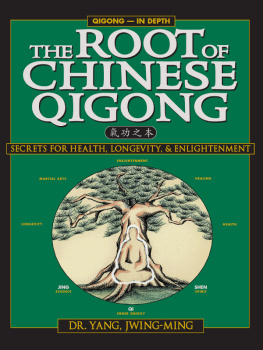
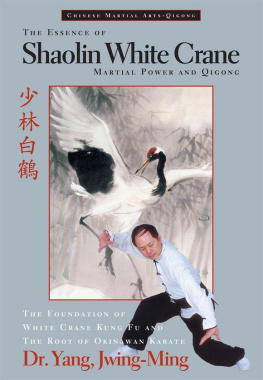
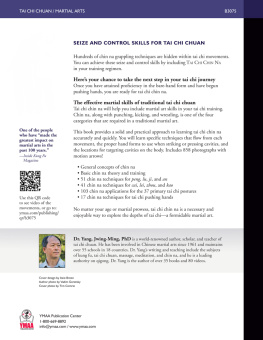

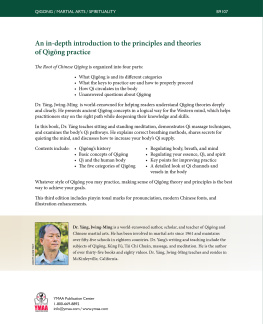
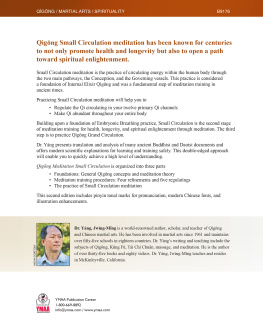
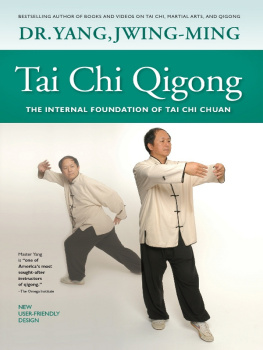







 ) has been well known for centuries throughout the East, including China, India, Indo-China, Korea, and Japan. According to ancient documents from Buddhist and Daoist monasteries, if one practices correctly under a masters guidance, it might take only 90 days to learn to circulate Qi in the Small Circulation path of the Conception and Governing Vessels. But I did not achieve this goal until I was 24 because I was young, and did not know the correct theory and technique. Documentary information was sparse, so I asked my White Crane and Taijiquan Masters. Due to lack of personal teaching experience, they refused to guide me. They simply advised me not to continue because of the danger involved. I could not calm down my mind to practice due to my school work and martial arts training. From the age of 15 to 19, in addition to school work, I trained Taijiquan in the early morning, and White Crane every evening. My meditation practice suffered as a result.
) has been well known for centuries throughout the East, including China, India, Indo-China, Korea, and Japan. According to ancient documents from Buddhist and Daoist monasteries, if one practices correctly under a masters guidance, it might take only 90 days to learn to circulate Qi in the Small Circulation path of the Conception and Governing Vessels. But I did not achieve this goal until I was 24 because I was young, and did not know the correct theory and technique. Documentary information was sparse, so I asked my White Crane and Taijiquan Masters. Due to lack of personal teaching experience, they refused to guide me. They simply advised me not to continue because of the danger involved. I could not calm down my mind to practice due to my school work and martial arts training. From the age of 15 to 19, in addition to school work, I trained Taijiquan in the early morning, and White Crane every evening. My meditation practice suffered as a result.